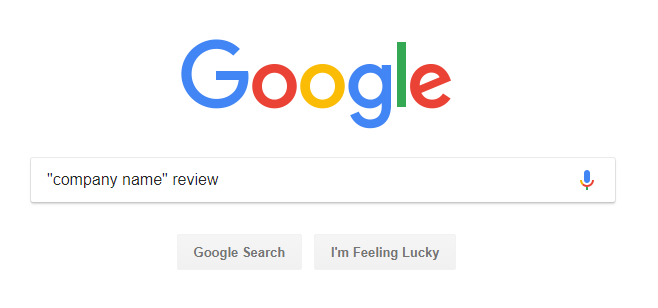When Google decides to publicly release the 164 page document they provide to hired contractors who evaluate search quality, SEOs should take notice. Afterall, it’s not often such we get such an in-depth, primary source of SEO info like this, revealing what makes for a quality page – a page Google wants to find and rank – and what doesn’t. There’s lots to talk about so let’s jump right in with key lessons to keep in mind with your site.
A quick bit of background
As part of improving its algorithm, Google contracts over 10,000 people per year to rate search quality. These search quality raters are tasked with searching Google for specific terms, then evaluating the results they find. They look at individual pages as well as the block of search results, gauging how well each satisfies the query using a defined set of criteria. That criteria is contained in the Search Quality Evaluator Guidelines. In the past, this document was kept top-secret, for internal eyes only. However, in recent years, after it was repeatedly leaked to the search community, it’s now public – but with so much SEO news noise, it doesn’t get the attention it deserves. It’s important to know that search quality raters do not have direct influence of the Google algorithm. Rather, their findings are used as feedback on how well the algorithm is locating relevant, useful results for searchers, which the engineers can then use to adjust the algorithm if they see fit. The best way to think about this document is being a ‘look under the hood’ at what kinds of results Google ultimately wants its algorithm to find and rank, and what criteria makes for a quality page. If we understand what constitutes a quality result, we can plan our own pages accordingly.
1. If a search quality rater evaluates your site, they’re going to give you a Page Quality (PQ) score ranging from ‘Highest’ to ‘Lowest’ based on these characteristics
To get the ‘Highest’ score, your page must have at least one, but preferably all, of the following characteristics:
- Serve a beneficial purpose and achieve that purpose very well
- Have a very high level of Expertise, Authoritativeness and Trust (E-A-T)
- Have a very positive reputation for the website and the author of the content
- Have a satisfying or comprehensive amount of very high quality Main Content (MC) for the purpose of the page
If your site deals with anything financial, medical, legal, ecommerce or news related, where your content could potentially impact the future happiness, health, financial stability, or safety of users, it will be held to an even higher standard for Page Quality (PQ). Pages of this type are nicknamed ‘Your Money or Your Life’ (YMYL) in the guidelines, and are evaluated most rigorously. Let’s now look at each of these characteristics in more detail.
2. Serve a beneficial purpose and achieve that purpose very well
Every page is created with a purpose of some kind. That purpose is either going to be beneficial or harmful. Google defines a beneficial page purpose as:
- To share information about a topic
- To share personal or social information
- To share pictures, videos, or other forms of media
- To express an opinion or point of view
- To entertain
- To sell products or services
- To allow users to post questions for other users to answer
- To allow users to share files or to download software
- Or something else
As long as the page is created to help users, Google will not consider any particular page purpose or type to be higher quality than another. Google defines a negative page purpose as:
- Promoting hate
- Deception
- Encouraging self harm
- Debunked or unsubstantiated conspiracy theories
- YMYL (Your Money or Your Life, used for financial, medical, legal, etc.) content that contradicts well-established expert consensus
The first thing raters are asked to do is determine the true purpose of the page and then assign a Page Quality (PQ) rating based on whether they think the page meets that intended purpose. Any page created for a negative purpose will receive a ‘Lowest’ PQ, and any page with an unclear purpose will also receive a ‘Lowest’ PQ. To do: Most commercial websites have a purpose that is clear enough for a visitor or search quality evaluator to determine, so all is fine there. Where there is usually room for improvement is with asking ‘Does each page of my site achieve its purpose well?’ If it doesn’t, there’s work to do.
- Is our content complete enough to really help that person who has just arrived from search results?
- Do we understand what that person wants to do, or what that person wants to know, and are we delivering?
- What are we leaving unsaid? What aren’t we saying well enough?
3. Have a very high level of Expertise, Authoritativeness and Trust (E-A-T)
The guidelines ask raters to assess:
- The expertise of the creator of the content
- The authoritativeness of the creator of the content, the content itself, and the website
- The trustworthiness of the creator of the content, the content itself, and the website
Expertise is defined in two ways: ‘Formal Expertise’ and ‘Everyday Expertise’. ‘Formal Expertise’ is where the author is professionally recognised and credentialled. For example, a doctor writing about a medical condition. Formal Expertise is required for YMYL topics. ‘Everyday Expertise’ is where a person has first-hand experience. For example, a person writing a detailed review of a restaurant. ‘Everyday Expertise’ is acceptable for less serious topics. The level of E-A-T must be appropriate to the website’s content, with YMYL sites having the highest standards. Similarly, Authoritativeness describes how recognised the author, content and website is, as having influence on the topic it covers. Signs of authority include awards, professional recognition, a history of publishing in the space, an association with a government or educational organisation, etc. Trustworthiness, similar to Authoritativeness, can basically be described as ‘do you trust this info?’. Raters are looking at the author and website level. To do: In 2008, Google’s then CEO Eric Schmidt said “the internet is fast becoming a “cesspool” where false information thrives. He then said “Brands are the solution… Brands are how you sort out the cesspool.”  What does he mean? Brands, or perhaps better thought of as ‘recognisable entities’, have the motivation to uphold a higher standard. In today’s world, anything can be a brand. We’re used to thinking about companies like Apple and Tesla, but as an individual, you have a personal brand too. What we’re seeing in these Search Quality Evaluator Guidelines is the need for individuals, and companies, to have strong brands. For an SEO practitioner, this is an opportunity to help clients by:
What does he mean? Brands, or perhaps better thought of as ‘recognisable entities’, have the motivation to uphold a higher standard. In today’s world, anything can be a brand. We’re used to thinking about companies like Apple and Tesla, but as an individual, you have a personal brand too. What we’re seeing in these Search Quality Evaluator Guidelines is the need for individuals, and companies, to have strong brands. For an SEO practitioner, this is an opportunity to help clients by:
- Advising of the importance of personal brand building of each author in YMYL topics
- Seizing opportunities to enhance the brand of the site as a whole
Bottom line: The more recognisable your Expertise, Authority and Trust, the more likely you are to receive the ‘Highest’ PQ rating.
4. Have a very positive reputation for the website and the author of the content
Reputation informs E-A-T, so raters are required to check for signs of positive or negative reputation for every site they evaluate. Any site with signs of a negative reputation cannot receive a search quality rating of ‘High’, let alone ‘Highest’, no matter how good any individual page is. This quote from the guidelines sums it up best: “Many websites are eager to tell users how great they are. Some webmasters have read these rating guidelines and write “reviews” on various review websites. But for Page Quality rating, you must also look for outside, independent reputation information about the website. When the website says one thing about itself, but reputable external sources disagree with what the website says, trust the external sources.” To do: Reputation research will be used to find out what real users, as well as experts, think about a website and author, i.e.  The big idea here is that online, when someone mentions you or your organisation, that mention is now a reputation signal and therefore part of your digital marketing mix. That means:
The big idea here is that online, when someone mentions you or your organisation, that mention is now a reputation signal and therefore part of your digital marketing mix. That means:
- Actively engaging happy customers for reviews across the website’s important in your industry like TrustPilot or Google My Business
- Performing online PR to establish a positive pattern of your brand being mentioned online
- Understanding that it’s impossible to control what people say across the internet, but if your company’s product and operations are good, you’ll create happy customers that will naturally spread the good word
Please also know that for YMYL pages, a mixed reputation (good and bad) is cause in itself for a Low PQ rating.
5. Have a satisfying or comprehensive amount of very high quality Main Content (MC) for the purpose of the page
These guidelines teach raters to classify all of the content on a page into three categories:
- Main Content (MC) – any part of the page that helps the page achieve its purpose, such as the main body content of the page
- Supplementary Content (SC) – additional parts of the page that contribute to a good user experience but do not help the page achieve its purpose, such as navigation, user comments, related links and so on
- Ads/Monetisation (Ads) – content or links that are displayed for the purpose of making money from clicks
“The quality of the MC is one of the most important criteria in Page Quality rating, and informs the E-A-T of the page. For all types of webpages, creating high quality MC takes a significant amount of at least one of the following: time, effort, expertise, and talent/skill.” The amount of MC must be satisfactory for the purpose of the page. Too little MC and the PQ score will suffer. “Some Low quality pages are unsatisfying because they have a small amount of MC for the purpose of the page. For example, imagine an encyclopedia article on a very broad topic such as World War II that has just a few paragraphs.” The guidelines also point a finger at clickbait titles as part of measuring MC. “Please examine the title on the page. The title of the page should describe the content. Exaggerated or shocking titles can entice users to click on pages in search results. If pages do not live up to the exaggerated or shocking title or images, the experience leaves users feeling surprised and confused. Here is an example of a page with an exaggerated and shocking title: “Is the World about to End? Mysterious Sightings of 25ft Sea Serpents Prompt Panic!” as the title for an article about the unidentified remains of one small dead fish on a beach. Pages with exaggerated or shocking titles that do not describe the MC well should be rated Low” To do: Your MC has some heavy lifting to do:
- It must provide searchers with the information and answers they are looking for
- It must be suitably lengthy for the purpose of the page
- It must demonstrate your E-A-T
Let’s look at an example of what not to do. The guidelines cite an article about How to adopt a child from Iraq. The first recommendation in the article is to “Choose an adoption agency”. To do this, the article suggests using the phone book. Hmm… Using the phone book to find an adoption agency. Insightful? No. This is commonly-known information that would be of little benefit to someone looking for advice specifically for Iraq. It’s also not a good demonstration of E-A-T, and there is no supporting info about the author’s background on the topic. The result? Low PQ score. On the other hand, here’s an example of a satisfying amount of MC: The Ultimate Guide to Chocolate Chip Cookies. Here’s how the rater describes the page: “Even though this user does not seem to be a well-known professional chef, recipes are an example of everyday expertise. The author of this blog has documented her extensive experimentation with a chocolate chip cookie recipe, and her expertise is demonstrated in the large quantity of high or highest quality MC.” The MC is very fit for purpose. And speaking of purpose, you might be wondering, do you have to have a very lengthy page to have a satisfying MC? No. This bank login page performs well and is quite short on content. The rater describes it having: “A satisfying amount of high quality MC for its purpose (login page)” because “this page has login functionality, as well as clear information about what the user is logging into. This is a large, popular bank with a good reputation” So short content can be totally fit for purpose, if that’s the most beneficial format for the user.
Over to you!
I hope this post helps you improve your PQ scores by maximising your E-A-T with MC that satisfies its purpose very well. Now I’d like to turn it over to you: Was there anything in particular here that you found helpful? Or maybe you have an excellent piece of content that you think I should add. Either way, your contribution is welcome. Please let me know by leaving a comment here.

